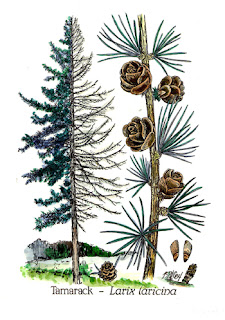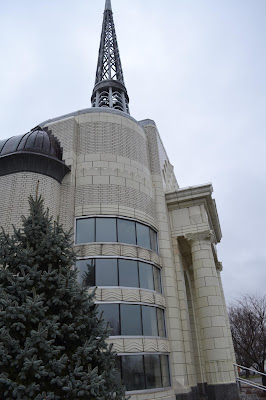I'm starting to be able to spot these things a mile away, post offices built during the Depression that feature Public Works of Art Project murals. I was in Garrett late last summer to look at a theater project and their post office caught my eye. Sure enough, it had one of Indiana's 36 extant post office murals. This one recalls the city's great railroad past. The following is from a piece I wrote about Rensselaer's mural:
The Public Works of Art Project was formed on
December 8, 1933, as part of President Franklin Roosevelt’s New Deal program to
pull the country out of the dire economic conditions brought on by the stock
market crash in 1929. On the December 8th
date, a meeting was held by the Treasury Department’s Advisory Committee on
Fine Arts which also included First Lady, Eleanor Roosevelt and the directors
of eight major museums of art in the United States. The goal was to employ artists in the
decoration of public buildings and parks. To participate, artists had to prove that
they were unemployed and qualified to produce works of art that would benefit
public property. Following the success
of other New Deal programs, the Works Progress Administration was formed in
1935 and included under its auspices the Division of Professional and Service
Projects with four programs: art, music, literature, and drama. The Federal Art Project was designed for the
production of art among other related functions.
The Secretary of the Treasury, Henry Morgenthau,
Jr., established a Section of Painting and Sculpture to employ artists for
producing work for public buildings in 1935 after funding for the Public Works
of Art Project was withdrawn. The
founder of the Public Works of Art Project, Edward Bruce, was chosen to direct
the program. To achieve the goal of exposing the public to
good art, post offices were selected because of high volume of use. Bruce commented in a letter to President
Roosevelt that placing art in post offices would carry out his “dream of
letting simple people all over the country see at least one
thing of beauty.”
Thirty-seven
murals were commissioned for Indiana
post offices. Thirty-six are
extant. The first mural was installed in
the Lafayette post office in 1936 and the last was installed in Monticello in
1942, one year before the Treasury Department program would end.
Garrett is
located in west central DeKalb County. The town was platted by Beverly
Randolph, the son of James Randolph, the chief engineer of the Baltimore and
Ohio Railroad. The town was platted in
1875, shortly after the railroad was constructed through DeKalb County, and was
named for John Garrett, the president of the railroad. Lots were sold immediately and a rush to
create a new commercial and shipping center with access to the railroad
occurred in the town genuinely developed by and for the railroad. By 1913 Garrett’s population was nearly 5,000. The town was incorporated as a city in 1893.
Some of the more significant public
works developed in Garrett at the turn of the century were the city’s water and light company plant that was established in
1896. There were nine miles of water
lines included in the city’s water system.
By 1912, the city had developed a boulevard lighting system. The city had three miles of paved streets and
five miles of sewerage under the streets by 1913. The city constructed a new city hall in 1913
and a Carnegie library by 1914. One of
the largest public buildings in the city is the Sacred Heart Hospital which was
constructed in 1902.




































